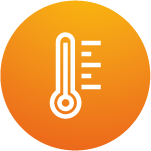
Employ AI and Machine Learning techniques to Increase the efficiency of wind turbines and solar parks and to improve the accuracy of forecasting.

Enable EU stakeholders to offer better renewable energy production facilities, with reduced maintenance costs, and accurate return of investment prediction.

Create a data analytics platform that will be able to manage extreme loads of sensor streaming data and time series.

Provide accurate forecasting and prediction through AI algorithms that work over huge volumes of streaming data.
Soiling is the accumulation of material (dust, droppings, emissions) that leads to a degradation of the power yield of solar panels. Our innovation is a toolkit that supports a set of functionalities regarding soiling detection, including changepoint (significant cleaning) detection, deviation (period with considerable soiling) detection, and potential deviation (soiling) prediction.
ModelarDB (MDB) is a platform for managing extreme-scale high-frequency time series (TS) from wind and solar parks. MDB is the first integrated platform handling extreme-scale time series with low cost and high performance, supporting more efficient wind/solar park operation.
The innovation is a self-service visual analytics platform for big geo-located and time-series data from renewable energy sources, such as wind and solar parks. It offers complex and real-time visual analytics at the macroscale (e.g., park KPIs on a map) and microscale (e.g., analysis of multivariate time-series from multiple sensors of a single wind turbine).
High-volume and/or high-velocity data is increasingly being generated and analyzed, especially in domains like IoT and banking. Consequently, applications that require accurate real-time forecasts and predictions are also steadily increasing. Examples include very short-term forecasting for energy bidding, failure detection in manufacturing, or sentiment analysis on data from sources like Twitter.
MORE is a Horizon 2020 project funded under Grant Agreement No. 957345 and will deliver a platform to address the technical challenges in time series and stream management, focusing on the RES industry. Specifically, MORE’s platform will introduce an architecture incorporating edge computing and cloud computing to address responsiveness and the need for sophisticated analytics simultaneously. This architecture will be combined with time series summarization techniques, or as we more accurately term them in MORE, modeling techniques for sensor data. Models are any compressed representations that allow the reconstruction of the original data points of a time series (e.g., a linear function) within a known error-bound (possibly zero). This approach synergizes with the edge computing approach since summarization can be done at the edge, reducing the load in the whole data processing pipeline.
The key objective of MORE is to allow stakeholders in industry sectors with huge volumes of sensor data, especially the RES industry, to: a) scale the management of streaming and historical time series beyond an order of magnitude beyond the state-of-art and b) perform forecasting, prediction, and diagnostics using the entire data available to them with accuracy that outperforms existing approaches.